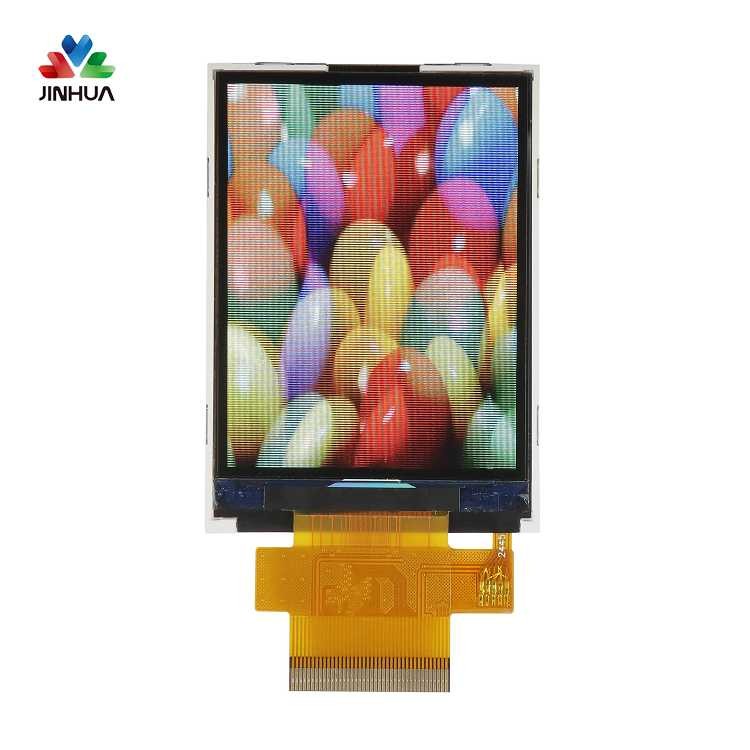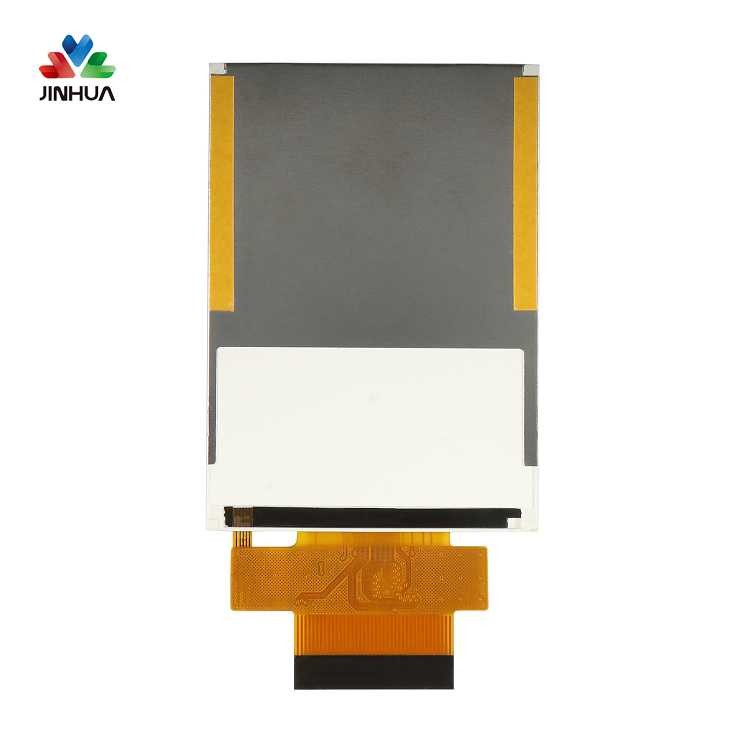1. Introduction to TFT
TFT is the abbreviation of the English initials of Thin Film Transistor. It has the dual characteristics of the "active (switching, amplifying)" of the transistor and the "thin" of the "thin film". It is combined with flat panel displays (such as LCD, OLED display module, etc.) to form today's flat-panel TVs (TFT-LCD, TFT). -OLED), TFT is one of the key core components.
Usually the active material of TFT is silicon film. According to the structure of silicon film, transistors are divided into amorphous silicon TFT (a-Si TFT), polysilicon (p-Si TFT) and monocrystalline silicon MOSFET (c-Si MOSFET). In addition, TFTs made of organic materials are called organic TFTs (or OTFTs).
Thin film transistors have been widely promoted and applied since they were invented in the 1960s, and their development speed is beyond imagination. From amorphous silicon TFT to polysilicon TFT, from high-temperature polysilicon TFT to low-temperature polysilicon TFT, the technology is becoming more and more mature, and the application objects have evolved from just driving LCD to driving both LCD and OLED, and even electronic paper. With the continuous improvement of the level of semiconductor technology, the pixel size is continuously reduced, and the resolution of the display screen is also getting higher and higher.
TFT-addressed liquid crystal display has become the leading technology of liquid crystal and even the entire flat panel display with its large capacity, high definition and full-color video display. Related high-tech industries have also become the main investment direction at present. TFT manufacturing technology plays a key role in the liquid crystal displays addressed by it, and its research and development has always been the focus of research.
Second, the driving method of the display
Both liquid crystal display and OLED display are divided into two categories: active display and passive display. For LCD display, it is divided into passive (passive) drive display LCD, such as: Color-STN-LCD display, STN LCD, TN-LCD, etc.; active (active) drive display LCD, such as: TFT-LCD. For OLED display, it is divided into passive (passive) drive display OLED (PMOLED) and active (active) drive display OLED (AMOLED).
Passive (passive) drive display OLED or LCD usually can only display less than 200 lines at the same time, so to display more lines to achieve high definition, it is necessary to use active (active) drive display mode, namely TFT-LCD, AMOLED. Active (active) drive display methods include TFT manufacturing technology.
3. TFT thin film technology
1. Amorphous silicon film. Amorphous silicon thin film transistor technology was proposed in the 1970s. After nearly 30 years of unremitting efforts by scientists from all over the world, now the seventh generation and above liquid crystal display (LCD) production lines have all been automated, and the industrial production technology is quite mature. It has developed into the mainstream product of liquid crystal display in the world today, and the goal of future development is larger screen size and lower production cost. Amorphous silicon TFT technology has the advantages of mature preparation process, relatively simple, high yield, and suitable for large-area production. The disadvantage is that the TFT has only N-type devices, and the mobility is only 0.5-1.0 cm2/Vs. Therefore, it is difficult to prepare high-performance, fully integrated, ultra-thin and compact display modules using amorphous silicon TFT technology. Amorphous silicon TFT technology cannot be used for high-resolution active drive OLED displays.
2. Polysilicon film (poly-Si). Polysilicon thin film processes are mainly divided into two categories:
(1) High temperature process refers to the temperature higher than 900℃ during the whole process. The high-temperature process can only use expensive quartz as the substrate, and the TFT performance is good. The high-temperature process is only suitable for small and medium-sized display screens or projection screen series.
(2) Low temperature process, the temperature during the whole process is lower than 600℃. Larger display screens can be made on cheap glass substrates using low-temperature processes. Low-temperature polysilicon (LTPS) TFTs are widely used in active (active) drive display TFT-LCD and AMOLED due to their low power consumption, light weight, thin profile, high current supply and system integration. The key to the process of polysilicon TFT is how to prepare a high-quality polysilicon film in a large area at low cost. Currently, methods for preparing polysilicon materials include rapid annealing (RTA), excimer laser crystallization (ELC), solid phase crystallization (SPC), continuous lateral crystallization (SLS), and metal-induced low-temperature polysilicon (MIC) technologies.
Low-temperature polysilicon LTPS TFT technology can completely solve the problems that amorphous silicon TFT technology cannot solve. Especially after 2000, due to the overcapacity of a-Si TFT, Japanese, Korean, and Taiwanese manufacturers actively invested in LTPS TFT, which gave LTPS TFT more development opportunities in the next few years. Especially with the recent rapid growth of the small and medium-sized panel market, the development of polysilicon TFT has entered a golden age. LTPS TFT has long been regarded as an indispensable technology for the next generation of LCDs.
3. Organic thin film TFT. It is self-evident that the emergence of organic TFTs will form a strong competition with existing amorphous silicon TFTs. It will be the core technology of a new generation of flexible display. The display screen made with flexible display technology can be curled like a canvas and may become an important member of the future display world like liquid crystal displays.
Because of the use of organic materials, it has the characteristics of bendable display, so it is not only impact resistant, but also light in weight and small in size. Not only has the appearance of the display changed, the application environment has also been greatly expanded and diversified. The display is printed on a plastic film sheet using a tape-reel process similar to the newspaper printing process, which can greatly reduce production costs.
OTFT research has been carried out internationally for nearly 20 years, but how to design and process high-performance devices, how to reduce processing costs, and how to synthesize organic semiconductor materials with high mobility and environmental stability have always been research and technical bottlenecks. No substantial breakthrough has been made yet. On the whole, international research in the field of flexible electronics is still in its infancy, with huge technological breakthroughs and patent application space.
Fourth, the application of TFT display (mainly the following four categories)
1. Portable display: video mobile phone, video PDA, video e-book, etc.;
2. Vehicle display: GPS, safe driving display, multimedia display, etc.;
3. Computer display: laptop, monitor, etc.;
4. Home appliances and office displays: TVs, internet terminals, electronic newspapers, etc.
In short, TFT technology is at the core of the flat panel display industry. It has the characteristics of capital-intensive, talent-intensive, and technology-intensive. The panel output value is high, and the industry agglomeration effect is obvious.






 English
English Deutsch
Deutsch русский
русский español
español العربية
العربية



 IPv6 network supported
IPv6 network supported
